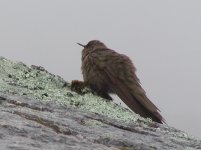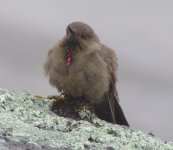On a walking holiday in northern Peru I found this hummingbird, high up in the mountains (about 5000m / 16000ft).
Being from Europe I'm not familiar with hummingbirds, so would appreciate if somebody could help with identifying this one. Photo was taken in April.
Bird was sitting still like in hibernation, it was alive but not reacting to anything. Is this normal? What was it doing so high up in the mountains near the glaciers?
Thanks,
Pasi
Being from Europe I'm not familiar with hummingbirds, so would appreciate if somebody could help with identifying this one. Photo was taken in April.
Bird was sitting still like in hibernation, it was alive but not reacting to anything. Is this normal? What was it doing so high up in the mountains near the glaciers?
Thanks,
Pasi





